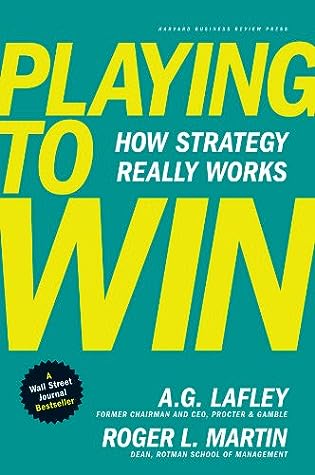More on this book
Community
Kindle Notes & Highlights
The activity system should be feasible, distinctive, and defensible if it is to enable you to win. If the system is missing any of these three qualities, you need to return to the where-to-play and how-to-win choices, refining or even entirely changing those choices until they result in a distinctive and winning activity system.
Unfortunately, the management teams had been trained over decades to see strategy reviews as anything but an opportunity to share ideas.
The kind of dialogue we wanted to foster is called assertive inquiry. Built on the work of organizational learning theorist Chris Argyris at Harvard Business School, this approach blends the explicit expression of your own thinking (advocacy) with a sincere exploration of the thinking of others (inquiry). In other words, it means clearly articulating your own ideas and sharing the data and reasoning behind them, while genuinely inquiring into the thoughts and reasoning of your peers.
This approach includes three key tools: (1) advocating your own position and then inviting responses (e.g., “This is how I see the situation, and why; to what extent do you see it differently?”); (2) paraphrasing what you believe to be the other person’s view and inquiring as to the validity of your understanding (e.g., “It sounds to me like your argument is this; to what extent does that capture your argument accurately?”); and (3) explaining a gap in your understanding of the other person’s views, and asking for more information (e.g., “It sounds like you think this acquisition is a bad
...more
Every company needs systems to support the building and maintenance of its key capabilities. The capabilities, which are captured in the fourth box of the choice cascade, are so important to competitive advantage that a company needs to install systems to ensure that these capabilities are properly nurtured.
the five questions in the strategic choice cascade (what is your winning aspiration, where will you play, how will you win, what capabilities will you use, and what management systems will you employ?)
To frame the choice, explicitly ask, what are the different ways of resolving this problem? Work to generate several options that stand in opposition to one another (i.e., such that you could not easily pursue the different remedies at the same time). Until you have identified a minimum of two mutually exclusive options to resolve the issue, the choice is not truly framed.
Here is the opportunity to encourage creative and more-unexpected strategies. In this context, a possibility should be expressed as a narrative or scenario, a happy story that describes a positive outcome. That is why we like to call them possibilities rather than options.
Once a diverse set of possibilities is established, the team then needs to reverse engineer the logic of each possibility. That is, it needs to specify what must be true for the possibility to be a terrific choice.
“For me to be confident in this possibility, we would have to know that consumers would respond in the following way.” This is a very different sort of statement than “That option will never work!
Once key barrier conditions are identified, they must be tested in ways the entire group will find compelling. A test may involve surveying a thousand consumers or speaking to only one supplier. It may entail crunching thousands of numbers or doing a purely qualitative assessment.
The ultimate goal is to design tests that will enable each member of the group to put hand on heart and commit to making a choice, and to supporting it thereafter, if the possibility passes the test.
Simply put, first test the things you’re most dubious about. Take the condition the team feels is the least likely to hold up, and test it first. If the team’s suspicion is right, that possibility will be eliminated without the need to test any of the other conditions.
don’t attempt to convince clients which choice is best; run a process that enables them to convince themselves.
Early on in the life of a research project, we would ask, what would have to be true about each box of the logic flow diagram for this project to produce a commercial success?
For your own company, ask (and honestly answer): Have you defined winning, and are you crystal clear about your winning aspiration? Have you decided where you can play to win (and just as decisively where you will not play)? Have you determined how, specifically, you will win where you choose to play? Have you pinpointed and built your core capabilities in such a way that they enable your where-to-play and how-to-win choices? Do your management systems and key measures support your other four strategic choices? The tools and frameworks in this book are designed to help you answer these five
...more
Have you used the strategy logic flow framework to understand the industry, channel, and customer values, your own relative capability and cost positions, and competitive reactions in a way that can underpin sustainable where-to-play and how-to-win choices? Have you reverse engineered the strategic possibilities and asked what would have to be true to ensure that this possibility is the one that gives you the best chance to win?


